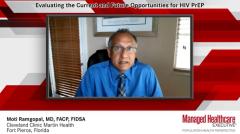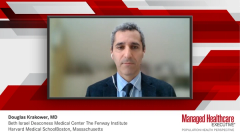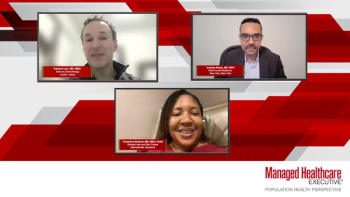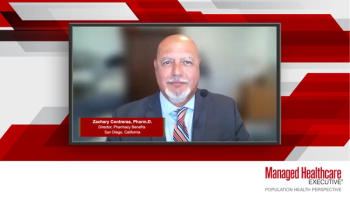
Increasing the Uptake of HIV PrEP in the Community
Considerations to help identify and increase utilization of PrEP therapy among patients who are eligible for treatment.
Episodes in this series

Douglas Krakower, MD: In terms of trying to improve the outcomes for pre-exposure prophylaxis, or PrEP, we actually need to work on all of the aspects in terms of screening, access, and adherence plans. There are gaps in all of these areas for PrEP at this point. The CDC thinks that there are probably 1.2 million or so Americans who would benefit from PrEP use, and most recent data from early this year suggest that we’re only at about a quarter of that level overall, and even lower in some other populations. We need to think about making access to HIV testing more patient-friendly, always emphasizing that it’s low or no cost to patients, getting people access to PrEP when they want it, and then having clinicians and health care organizations and community-based organizations think more about ways to ask people about what they know about PrEP and if they’re interested in it in a routine manner. Then once people are engaged in PrEP care, we have a lot of work to do in terms of keeping people adherent and persisting with the medication. The whole spectrum of the continuum of care needs more effective ways to improve it to optimize outcomes right now.
Moti Ramgopal, MD, FACP, FIDSA: When we look who are the appropriate candidates for PrEP, well, when we look at the demographics and who is acquiring HIV infection right now, it’s LatinX, African-American patients, younger patients under the age of 24. Let’s take these 3 groups. How do we now get those participants more involved in PrEP, understanding PrEP, what can we use? Social media is now the way to go. We have seen a lot of usage of social media, we can advertise in social media, engage in getting the question out there to those participants who can be on PrEP.
The challenge with PrEP is that a lot of people when they’re aged 16, 17, 18, 21, and 23 don’t think that they’re at high risk for acquiring HIV. They’re now moving from high school, moving to college. This is actually the greatest risk group. How do we address that? Should we get health care counselors involved, workers involved, teachers involved? And then once they’re leaving that health care setting, the pediatrician should also be aware. And a lot of these people I’m mentioning, they don’t want to talk about PrEP. They don’t even understand what PrEP means to this younger generation of potential people who can acquire HIV.
Why are people who are eligible to receive PrEP not getting it? Let’s ask the question; the population of higher-risk people in this country right now for PrEP is about a million people. How many people are on PrEP? Less than 250,000 people, probably much less than 200,000 people. So only about 25% of people who should be on PrEP are on PrEP. When the CDC says that, we are failing, and PrEP has been out for 9 years now. This strategy to prevent transmission of HIV has been available for 9 years. How are we going to engage those 750,000 people? How are we going to make them more involved with PrEP, is the question.
What does that look like? Again, social media. Again, educators. Again, looking at providers who are willing to speak to the younger generation about PrEP. And parents. I just got a call recently from the mother of a 17-year-old who wants to get her son on PrEP because she realized he has high-risk behavior. And because she’s also [HIV] positive, she obviously sees that in her son. So, getting parents more involved is also going to be a very interesting way of engaging more PrEP, getting to that number of over a million people to be on PrEP. The high risk: African-American, Latinx, the younger population, the younger generation. But I think the only way to get there is to educate, educate, educate. Get the message out there. Here’s a very effective strategy where, and we’ll discuss later different treatment strategies, if you take 1 pill once a day, you can prevent acquiring HIV by high-risk behavior.
Transcript edited for clarity.
Newsletter
Get the latest industry news, event updates, and more from Managed healthcare Executive.




















































